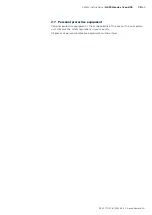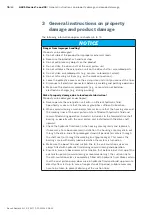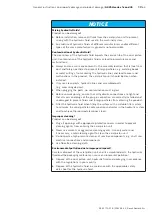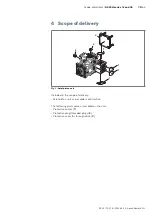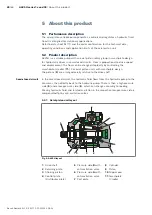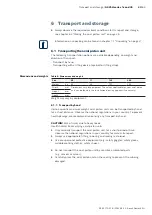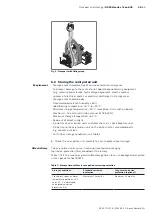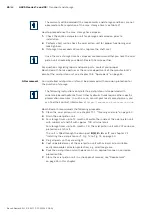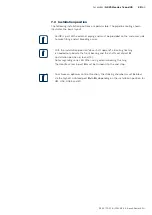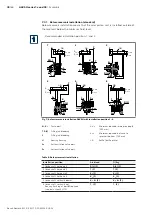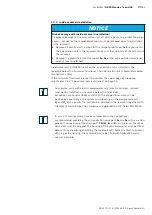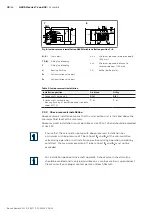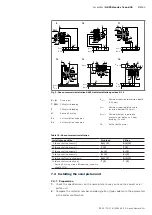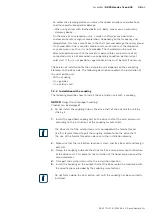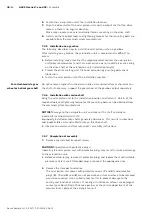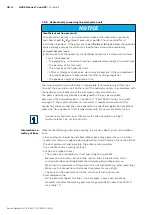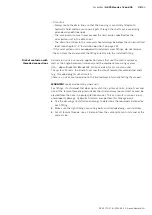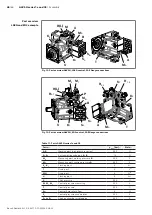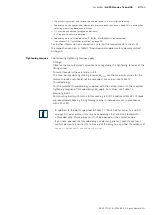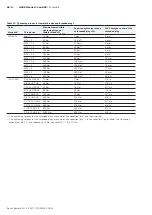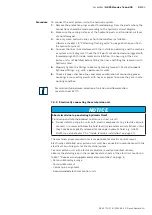
Bosch Rexroth AG, RE 92110-01-B/2022-03-22
28
/64
A4VSH series 1x and 30
| Assembly
▶ Make sure the suction, boost, leakage, and return lines flow into the reservoir
below the minimum fluid level under all operating conditions.This will prevent
air from being drawn in and foam from forming.
▶ For the reservoir design, ensure that there is an adequate distance between
the suction line and the drain line. We recommend using a baffle (baffle plate)
between suction line and drain line. A baffle improves the air separation ability
as it gives the hydraulic fluid more time for desorption. Apart from that, this
prevents the heated return flow from being drawn directly back into the suction
line. The suction port must be supplied with air-free, calmed and cooled
hydraulic fluid.
▶ Ensure that the axial piston pump has a minimum suction pressure of 1 bar at
port
S
A
and
S
B
of the anti-cavitation valve during operation in all installation
positions during operation and during cold start. The maximum pressure of
16 bar at port
S
A
and
S
B
must not be exceeded.
▶ On the version with the mounted boost pump, please note the minimum
permissible suction pressure of the boost pump used. The different data sheets
for the attachment pumps are listed in data sheet 92110.
-0.2
0.8 abs
.
1 2
3
0
0 1
2
-1
2
1
S
B
S
A
U
K
B
A
Fig� 6: Suction pressure
1
Absolute pressure gauge
2
Standard pressure gauge (relative)
The suction conditions improve with below and inside-reservoir installation.
▶ Make sure that the working environment at the installation site is completely
free of dust and foreign substances. The axial piston unit should be clean when
installed. Contamination of the hydraulic fluid can considerably affect the
function and service life of the axial piston unit.
▶ When using pump carriers with the installation position "drive shaft upward",
dirt can accumulate on the shaft seal, which can lead to leaks. Particularly
in case of highly contaminated ambient conditions, any potentially present
air bleed bores in the pump carrier should be plugged in compliance with
applicable standards and safety regulations. Apart from that, regular checks
and/or cleaning is necessary. Observe the information in chapter 10.1
"Cleaning and care" on page 50 and Table 13 "Inspection schedule"
on page 50.
▶ Use fiber-free cleaning cloth.
▶ Use suitable, mild cleaning agents to remove lubricants and other heavy
contamination. Do not allow cleaning agents to enter into the hydraulic system.


